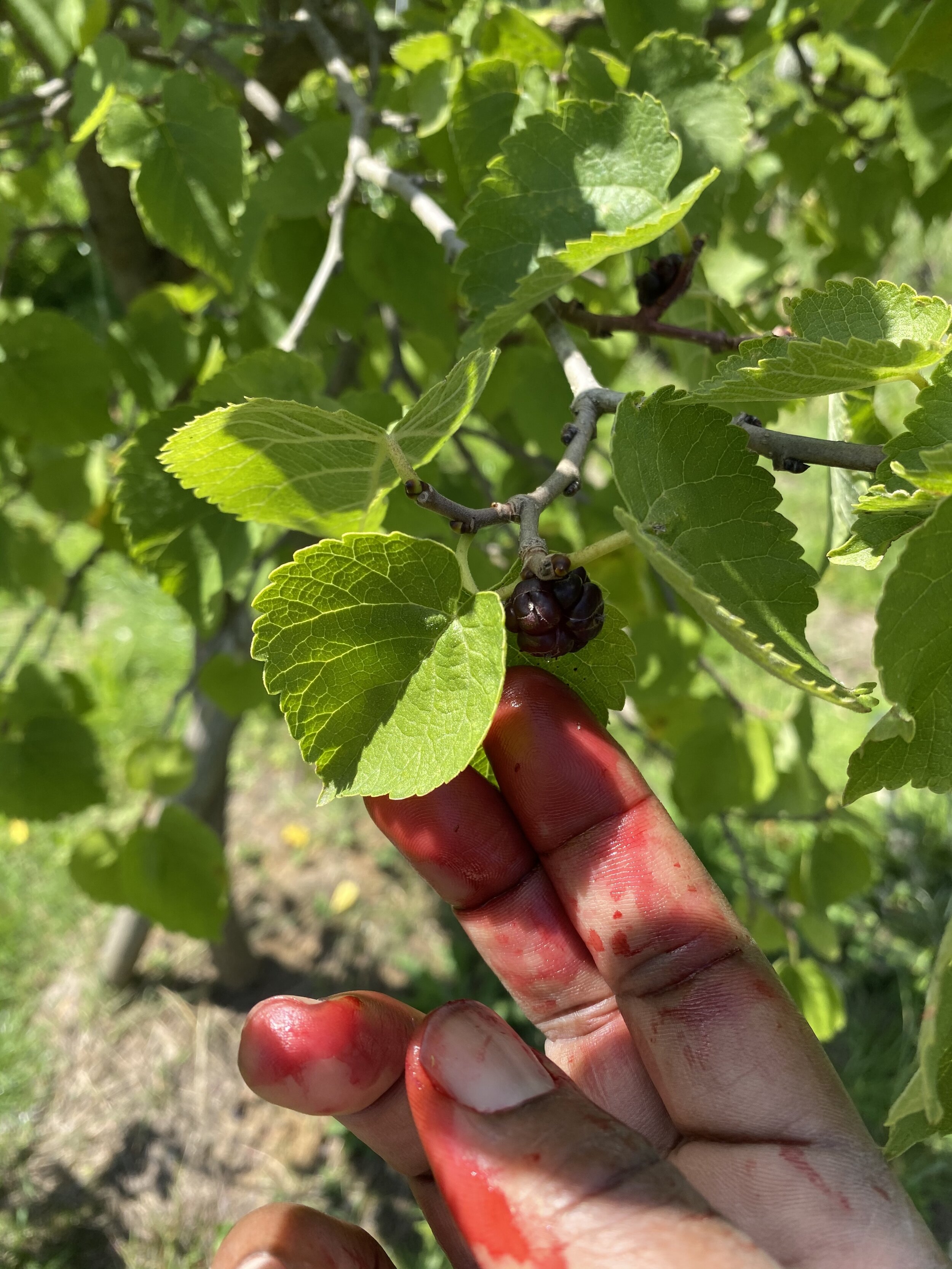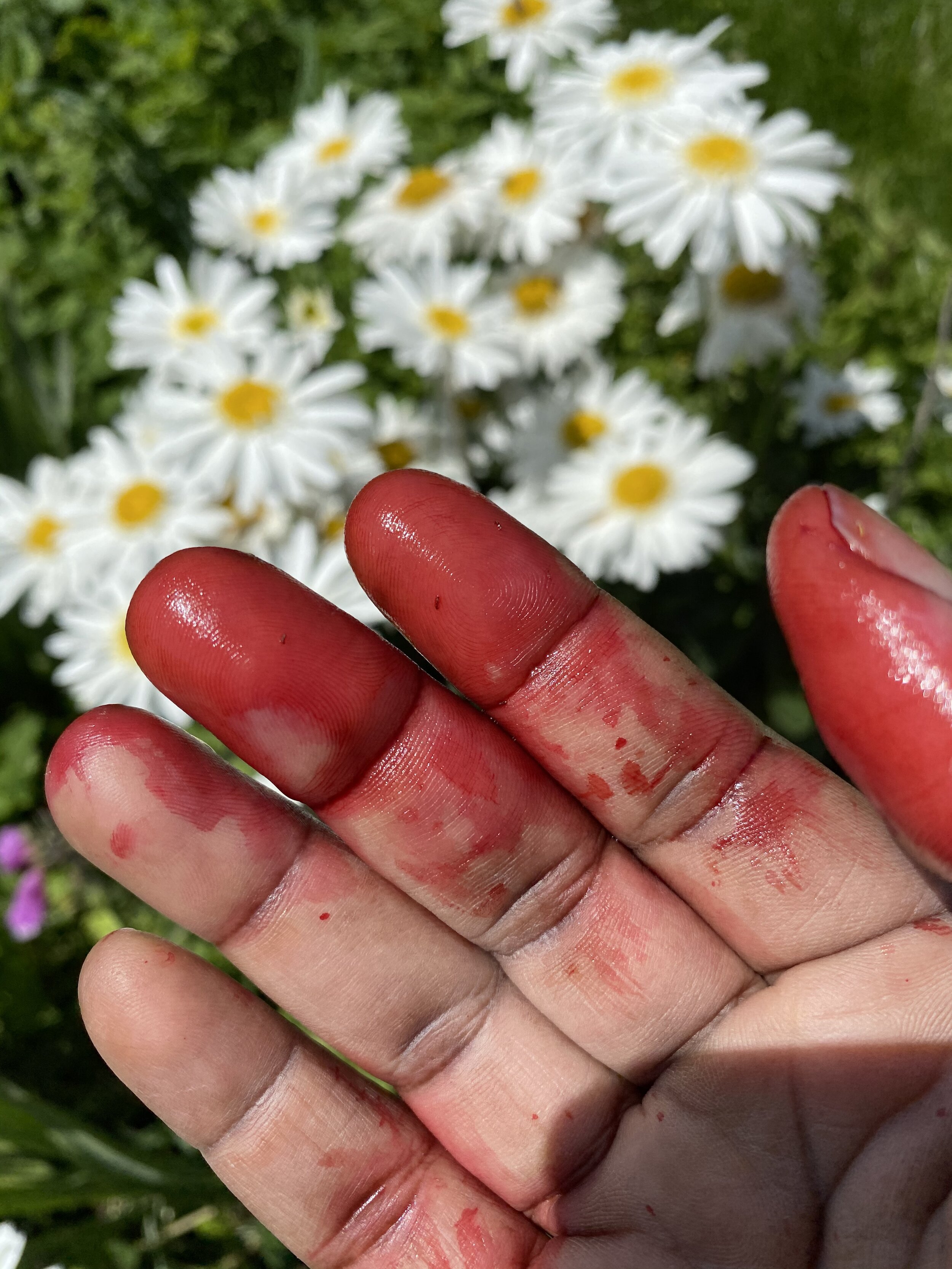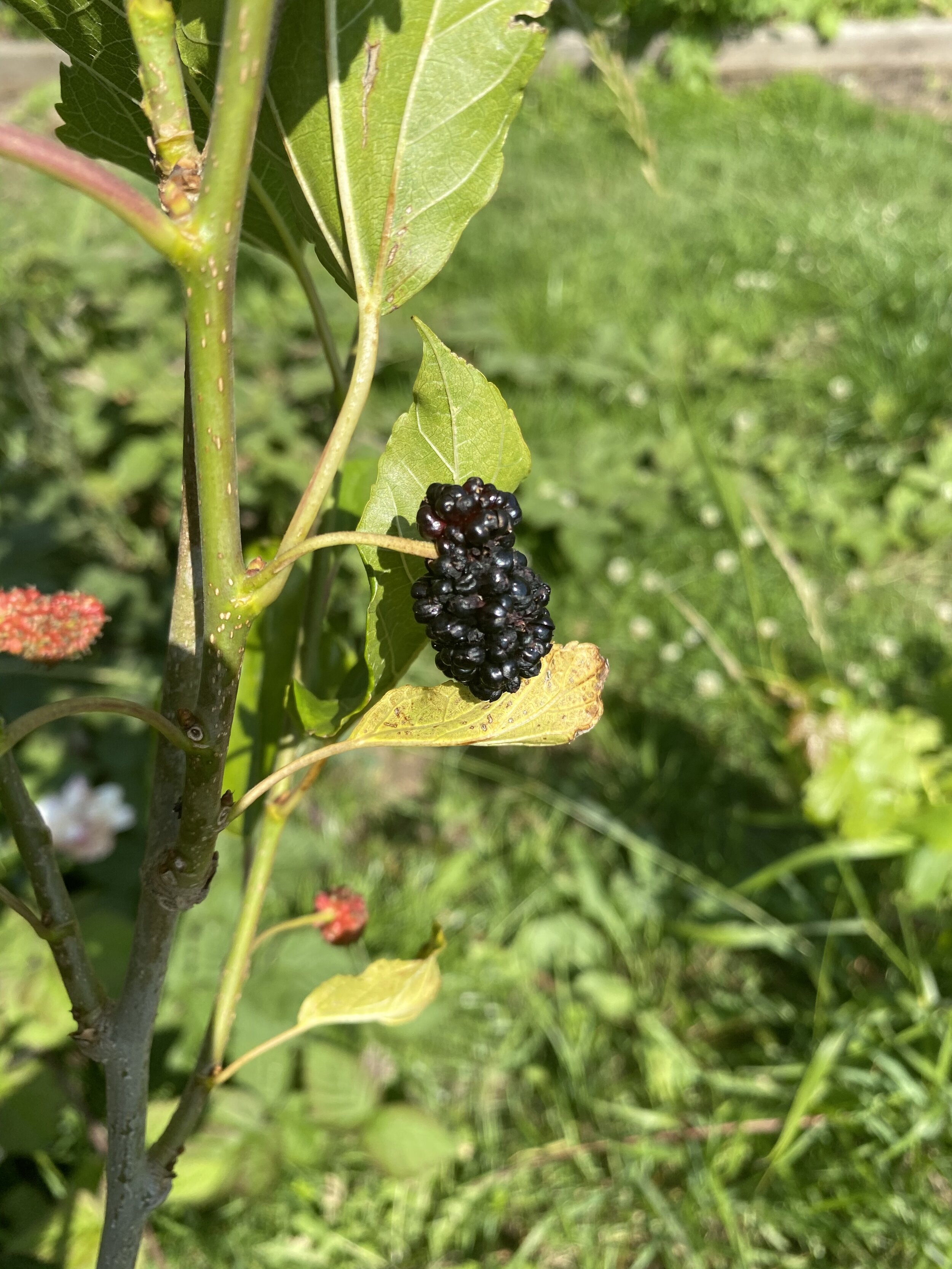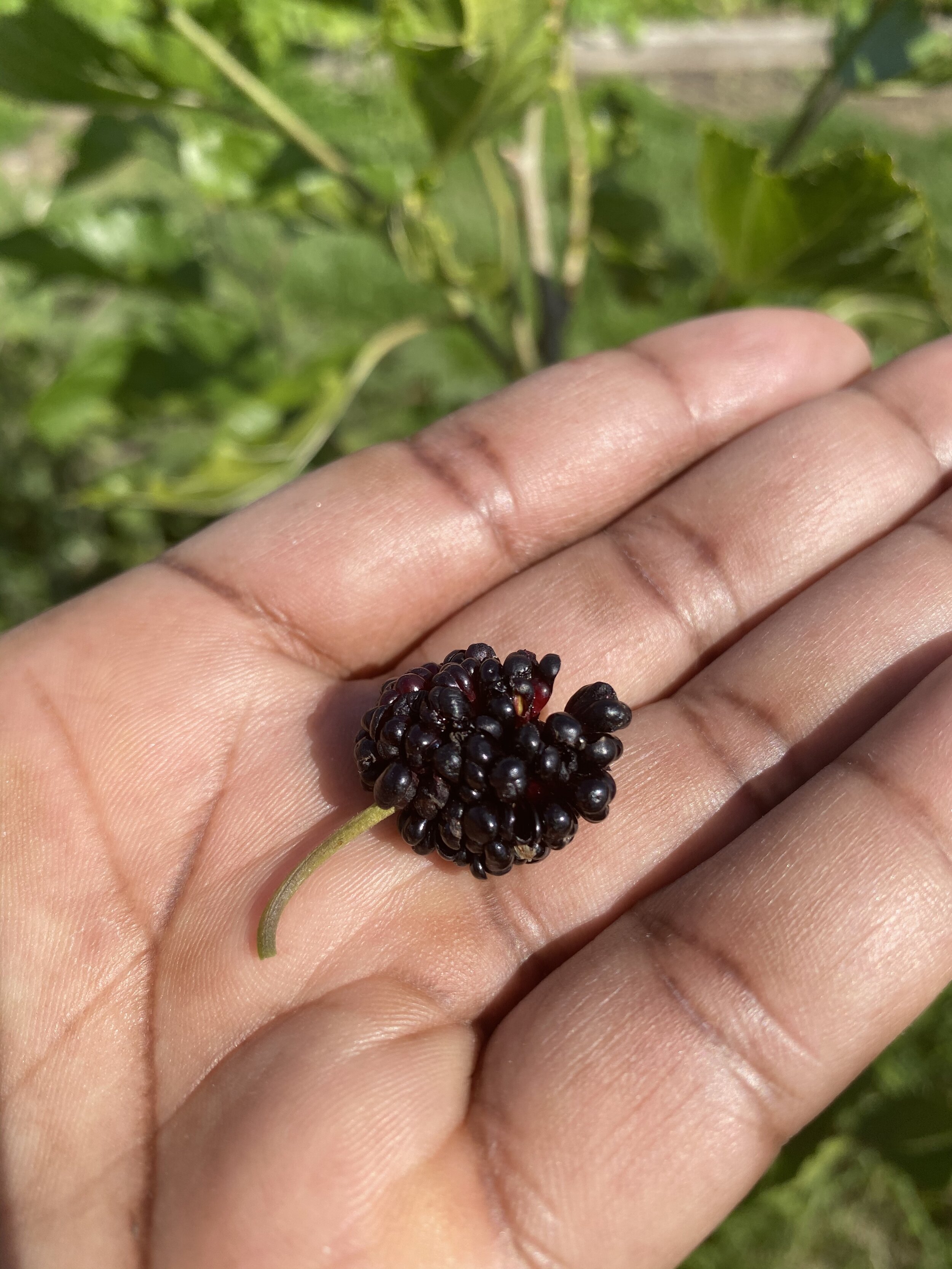Mmmm ... mulberries!
I am enjoying a bumper crop of black mulberries this year!
The fruit of the black mulberry when ripe is wine-red to deep purple, firm yet delicate, and has a flavour like no other berry I know. Sort of like a full-bodied, clean, but sweet and fresh red wine. No aftertaste. Straight from the tree - simply sublime.
The black mulberry, scientific name Morus nigra is a native of south western Asia. It is a broad-crowned deciduous tree (8-12 m tall) with rounded heart-shaped dark green leaves. Insignificant flowers turn into those delicious wine red and almost black berries.
There are about 68 species of the genus Morus, the majority of which are native to Asia. China is home to over a thousand cultivars and has a long history associated with the production of silk from silkworms, which love mulberry leaves! White (Morus alba) and other mulberry trees were imported to England in the 17th century to support the development of an independent silk industry in England . The industry eventually declined, but some of the trees remain to this day.
I’ve learned that white mulberry or Morus alba fruit starts out white but ripens to a deep purple. … That’s it — I need a white mulberry tree! The hunt for a plant that will bear fruit sooner rather than years and years in the future begins now.
One of the oldest Morus nigra trees in London is believed to be the Bethnal Green Mulberry Tree, which grows within the site of the Old Bethnal Green Chest Hospital. It is well over 400 years old, bears scars of East End history, and is now under threat from developers. I signed a petition to save it from the developers a few days ago.
Morus nigra grows well in fertile, moist but well drained soil of any type. A sheltered location is best, protected from harsh winds. I find that the frunk has a tendency to bend (to the ground, even!!) under the weight of the broad crown. I’m terrible at supporting my plants but my mulberry tree is one I’ve stopped joking with, after it developed a ‘disturbing’ curve, which I have now nipped in the bud. It is actually looking much straighter after two year of training, and will likely need long term support.
I mentioned that I have two black mulberry plants. One is a Morus nigra Chelsea King James I, a tree. Interestingly, this tree is derived from one of a number of mulberry trees that existed during the times of King James I (17th century) in a garden in Swan Walk, now part of the Chelsea Physic Garden in south west London. During the second world war, cuttings were taken from the last remaining tree before it was removed to make way for the construction of an air raid shelter. My tree is ultimately derived from one of those cuttings, the variety which is named Chelsea King James I. What a heritage!
No, I didn’t cut myself … this is red, RED, delicious mulberry juice - from my Morus nigra ‘Chelsea King James I’ tree! It is almost 2m tall. All I have to do is reach in and ENJOY!
My other mulberry plant is a new variety called Morus nigra ‘Charlotte Rouse’, available exclusively from Suttons Seeds in the UK. It is marketed as an early producing, dwarf, shrub variety, which means that gardeners won’t have to wait year or even decades for berries! I bought is as a 9cm plant 3 years ago. It sort of languished in a small pot for over a year, but still gave me a few fruits. I say ‘languished’ because I didn’t give it the attention it needed with regards to sufficient watering and feeding, as well as potting up to a larger container too support growth. Life kept getting in the way. I finally said enough was enough after finding the poor thing badly dehydrated and wilted one time too many, and planted it directly into the ground 18 months ago. It has taken off brilliantly, is a very healthy shrub, almost 80cm tall, with dark green leaves that are narrower and more elongated than those of my ‘Chelsea King James I’. It bears lots of fruit over a long period from early summer to the autumn! The berries of Charlotte Rouse are larger than those of my ‘Chelsea King James I’ tree, with the colour changing from bright red to almost black when ripe. and firm. I will say that I prefer the taste, juiciness and texture of the fruit of my Morus nigra tree. In my opinion, with ‘Charlotte Rouse’, there is a certain ‘mealiness’ to the berries that I’d rather not experience. Still nice though. The shrub is still relatively young. Could that be a contributing factor? I’ll see how it develops.
Mulberries are a forager’s delight. I’m told the berries don’t hold up well to commercial harvesting and distribution processes. That’s why they are not sold fresh by large retailers in the UK. You simply can’t buy them in your run-of-the-mill supermarket chain store.












